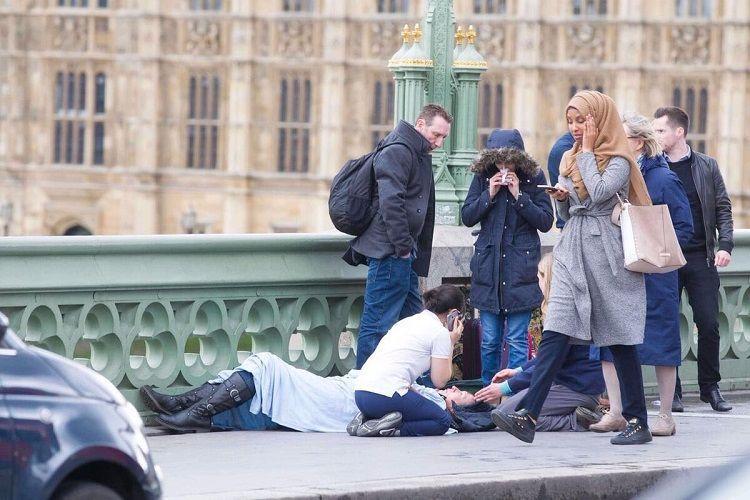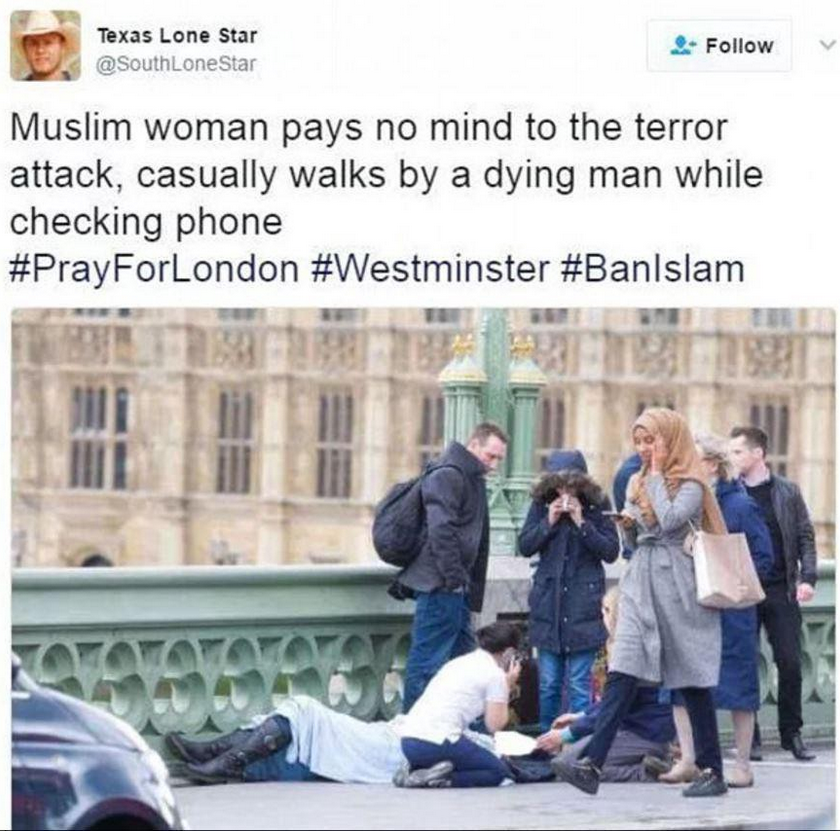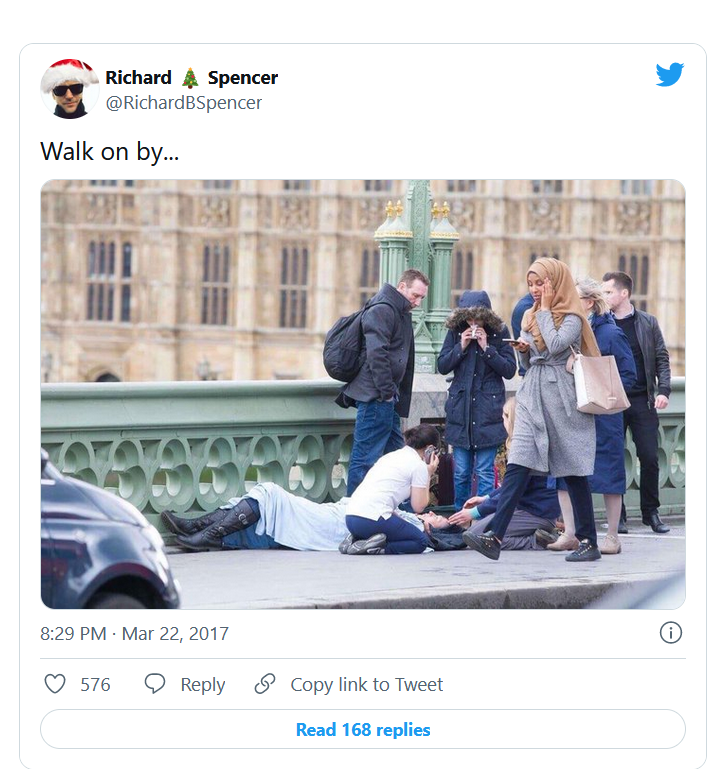
Digital vigilantism, Islamophobia and an attack on London
This article provides an analysis of vigilantism in the digital age. Its focus will be on the terror attack on London's Westminster Bridge in 2017 and the journalistic aftermath of the case. The examination will zoom in on how digital vigilantism can distort the truth and unjustifiably punish its victims. Therefore, the three components that contribute to the vigilantism case will be investigated; affordances of social media, citizen witnessing, and digital journalism.
Due to the hybrid form of news coverage that emerged with digitalization, the article will analyze data from the social media platform Twitter as well as traditional news media such as CNN and BBC.
What happened?
News of a terrorist attack in London broke on March 22, 2017. The terror attack occurred outside the Palace of Westminster, the seat of the parliament of the United Kingdom. The 52-year-old perpetrator Khalid Masood steered his car on the pavement of the Westminster Bridge where his vehicle hit multiple pedestrians, injuring 50 people. Following, he crashed the car through the fence surrounding the Westminster Palace grounds and made his way to New Palace Yard where he stabbed an unarmed police officer. An armed police officer set an end to the attack by shooting the terrorist who died at the crime scene. As a consequence of the attack, 5 victims died. The police categorized the case as Islamist-related terrorism (Wikipedia, 2022).
The photographer Jamie Lorriman who was an eyewitness at the scene took a picture of the moments after the terror attack on Westminster Bridge (Figure 1).

Figure 1 A picture capturing the moments after the Westminster terror attack
The photograph (Figure 1) shows an injured victim of the attack lying on the ground, surrounded by concerned-looking citizens who try to help the person. In the foreground, one can see a woman wearing a hijab who passes the scene while looking at her phone.
As the picture spread rapidly on Twitter, the photograph went viral and the woman in the foreground of the picture fell victim to digital vigilantism.
Digital vigilantism
The concept of digital vigilantism emerged with social media platforms. In the digital age, ordinary citizens make use of digital technologies to take the law into their own hands to punish wrongdoers online. Due to smartphones, citizens can take pictures and/or videos of people that misbehave in public and share the content on social media. The goal of people who perform this online activity is to articulate a collective understanding of shared values and norms, to inform and to express a mediated shared identity. It has to be highlighted that digital vigilantism is not activism. Instead, it is a collective punishment of the person in question. This punishment originates from the concept that shame can be instrumentalized as a form of social control (Trottier, 2016).
Domesticated technologies such as social media are based on the concept of user-generated content. Affordances of digital media show changing practices by users online. People who perform digital vigilantism practices intend to 'call out' wrong holders by identifying and confronting inappropriate or toxic behaviors. Often punishers focus on highlighting a certain behavior. Important to note is that circulating content of what seems to be inappropriate behavior of wrong holders is only one subjective narrative and could be used out of context. So, digital vigilantism can be unjustified in some cases.
Digital vigilantism and social media affordances
On the day of the terror attack, citizen imagery and news updates circulated rapidly on the platform Twitter. Hashtags emerged and a collective conversation about the event started. The Twitter user @SouthLoneStar contributed to the online conversation by reposting and commenting on the picture taken by Jamie Lorriman of the situation on Westminster Bridge after the attack (Figure 2).

Figure 2 A tweet by @SouthLoneStar practicing digital vigilantism
He performed the practice of digital vigilantism and accuses the woman of not caring about the victims of London's terror attack as she "casually walks by a dying man while checking phone" by framing the event through the headline and hashtags. Thus, he calls out the non-empathetic behavior of the alleged wrong holder and publicly shames her. Enabled by the affordances of social media, the Twitter user punishes the woman for her behavior. Through the connectivity of social media, the photographed actions of the woman went viral. Under the hashtags, #PrayforLondon and #Westminster a collective action of shaming the target and her action emerged. Thus, the target faced a shitstorm. Twitter's reshare function enabled the post to go viral and the comment function of Twitter offered the space for shaming her while emojis make it possible for users to visualize their emotions. Consequently, the woman was harassed by the public, and her reputation got damaged since she got framed as a person that would deny first aid.
Moreover, @SouthLoneStar's post frames a causal relationship between the appearance and the behavior of the woman. By highlighting her gender and religion, "Muslim woman", he draws attention to the hijab of the passer and positions the people surrounding the victim and himself as better members of society. The used hashtag #BanIslam frames his islamophobic message and functions as a platform of xenophobia-driven digital vigilantism as people started to contribute to the hashtag through the comment function (Figure 3).

Figure 3 A comment on @SouthLoneStar's post
Another post by @SouthLoneStar (Figure 4) underlines this as it spreads islamophobia again.

Figure 4 A post of @SouthLoneStar dividing Muslims and Christians based on behavior captured in a one-sided picture
Instrumentalizing the hashtags #PrayForLondon #Parliament and #Westminster for virality, he draws a division between the reaction of Muslims and Christians to the attack. He constructs the concept of "us" as the Christians who try to help victims of the terror attack' and "them" as Muslims who ignore the victims.
The shitstorm reached its peak as the American Neo-Nazi @RichardBSpencer reposted the picture of @SouthLoneStar with the caption "walk on by" (Figure 5). Thus, the white supremacist with 70.600 followers on Twitter participated in the digital vigilantism case and shamed the alleged wrong holder causing emotional collective punishment and insults of the right scene towards the Muslim woman as demonstrated in Figure 6.

Figure 5 A retweet by @RichardBSpencer

Figure 6 an insulting comment on @RichardBSpencer's post
Additionally, Twitter users invoked to doxx the woman. This means, that they intended to find and leak personal information about the person including her real-life name, phone number, address, and workplace to reinstate public morality. However, this intention remained unsuccessful.
It becomes obvious that people, enabled by social media affordances, 'call citizens out' while the person circulating the content and interacting with it portrays themselves as better members of society. In the case of the vigilantism case of the Westminster terror attack, the shaming was of xenophobic and islamophobic nature led by known figures of the right scene.
The truth behind the picture
After the widespread of the picture and the shitstorm that caused reputational damage, the activist group TellMAMA (measuring anti-muslim attacks) shared a statement on behalf of the woman. This allowed her to explain her side of the story which revealed another side to the one-sided narrative of the picture. She explains that her thoughts during the aftermath of the attack were "of sadness, fear, and concern" (TellMAMA, 2017). Additionally, she elaborates that she talked to other witnesses and offered her help even though enough people were tending to the victims already. Finally, she decided to call her family to inform them that she was unharmed by the terrorist attack and would return home. On her way home, she assisted a lady to get to Waterloo station who was traumatized by the events. In her statement, the woman also expresses her devastation as a result of the terror attack and the additional shock of finding her picture all over the internet. Moreover, she claims that the shitstorm originates from "those who could not look beyond my attire, who draw conclusions based on hate and xenophobia" (TellMAMA, 2017). This demonstrated that digital vigilantism often occurs when event coverage in form of user-generated content aligns with worldviews and ideologies rather than facts.
Besides that, the photographer Jamie Lorriman defends the woman in a statement to the Independent and stresses that she seemed "traumatized" (Pasha-Robinson, 2017) and "visibly distressed" (Pasha-Robinson, 2017). He also adds that she is one of the hundreds of people fleeing from the scene to escape the horrific situation. Thus, TellMAMA and the photographer contribute to unfolding the truth behind the Westminster attack picture and re-establish the reputation of the woman.
It becomes obvious that the case of London's terror attack shows how digital vigilantism can distort the truth and unjustifiably punish its victims. The raw picture quickly circulated without being monitored or analyzed by professionals. Since the imagery shows only fragments not the whole event in depth, the Twitter users deliberately recontextualized it to advance their xenophobic ideas. Additionally, the content was quickly framed by the publisher and his followers through hashtags and interactions in form of comments and reposts. As a result, the one-sided picture was pulled out of its original context causing the spread of islamophobic disinformation and leading to the collective shaming of an innocent person. This again underlines that digital vigilantism is often based on preconceptions and ideologies rather than the truth of the event.
The dynamics of the picture breaking news on Twitter
Citizen witnessing plays an important role in Brun’s (2018) dynamics of breaking news on social media due to the fact that when a striking event occurs bystanders (e.g. the photographer Lorriman) are the first ones who record imagery and circulate content on social media. Therefore they “fill in the news vacuum” (Bruns, 2018) that follows an event when reporters are not present.
Once witnessed footage spreads on social platforms, hashtags start to appear that describe the event. These hashtags frame the event and thus have an interpretive power over the unfolding of the breaking event. The power over the news content can be seen in @SouthLoneStar's post (Figure 2) that caused a shitstorm of an innocent woman through framing and circulating disinformation.
Simultaneously, participation in the conversation about the event grows: users start to add information, comment (Figure 3,6,7), and reshare (Figure 5) related content to the hashtag feed. This collective gate-watching process determines the newsworthiness of the content and surfaces the most salient content. Gate watching is defined as “the observation of the output gates of other social media participants, and the selective re-sharing of information that appears most important, relevant, and meaningful” (Bruns, 2018). Alarming in the case of London's terror attack is that the hashtag #PrayforLondon has been exploited for surfacing hateful content. So, posts that expressed compassion for the victims of the horrific event got less visibility.
Digital journalism and the hybrid media system
Some hours after the news broke through bystanders that post information on social media. Journalistic uptakes of the event lead to a hybrid form of news coverage; both professional and amateur participants added to the topic of breaking news (Bruns, 2018). The example of the TellMAMA article hosting the woman's statement and the article of the Independent shedding light on the photographer's narrative reveals that the unfolding of a news event only transforms into a clear picture when the news has been gone through a fact- and source-checking process. Moreover, the news has to be published by both official and unofficial news sources. Thus, the TellMAMA statement can be found as an article, cited by traditional news media, and as a post on Twitter.
The unofficial media allowed the victim to speak up and reveal her side of the story, while the official media also contributed to unraveling the truth. Hence, the multiplicity of publishing channels contributes to the fact-checking process of the event. As a consequence of the circulation of verified news about the aftermath of the Westminster attack on various news channels in the hybrid media system, the woman was able to shed light on the truth and fight against the fake news triggered by Islamophobia and right-wing ideologies.
Consequences
The viral picture on Westminster Bridge after the terror attack led to digital vigilantism against a Muslim woman. The wrongful shaming of the victim had negative effects, however, it also functions as a lesson for us as a society in the digital age.
On one hand, the case functions as a lesson to be critical about emotional and framed news on social media that have not been verified by official sources yet. Additionally, the journalistic uptake of wrongful digital vigilantism increased which raises awareness of the problem. The case underlines Trottier's (2016) theory that through social media, the perception of the appropriateness of disclosing and circulating personal information of citizens has changed. Thus, concepts of privacy and sharing have to be reconsidered in the modern age. Besides that, a community of Muslim women in London lined up at Westminster Bridge as a gesture of solidarity with the woman and the victims of the terror attack after the hateful post of @SouthLineStar went viral. This demonstration fights hate online as well as offline.
On the other hand, the case demonstrates that through the dynamics of breaking news on the media and social media affordances, hateful and disinforming content that harms an innocent person is surfaced over content that reminds of people that fell victim to the terrorist attack. Instead of content that spreads solidarity against terrorism, content that divides on the basis of religion and misinformation went viral. Finally, it harmed the woman in question since she was not only confronted with the consequences of witnessing a terror attack but also facing a shitstorm online that was raised from one-sided imagery, framing, and Islamophobia. This case highlights that unjust digital vigilantism can occur when event coverage or user-generated content aligns with worldviews and/or ideologies.
The viral picture of London's terror attack aftermath
By zooming in on the example of unjustified vigilantism in the case of the viral picture capturing the aftermath of 2017's terrorist attack on Westminster Bridge it becomes obvious that user-generated news coverage is biased and rooted in ideologies and worldviews. The analysis has shown that digital vigilantism can distort the truth and punish an innocent person. The examination of both the affordances of social media and citizen witnessing leads to the conclusion that these factors enabled unjustified and subjective digital vigilantism. The third factor, digital journalism, functioned to add another dimension of journalistically moderated information to the news report and emerges a hybrid media system that helps to unravel the truth.
False information circulated rapidly due to one-sided imagery that has not been monitored by journalists and was pulled out of its original context through framing. Finally, the vigilantism case was driven by Islamophobia as the woman is criticized for and reduced to her religion. Thus, the Muslim woman became a victim of harassment and harm due to the picture that went viral. Therefore, it is clear who the real wrong holders are.
References
BBC News. (2017, April 7). Westminster attack: What happened.
Bruns, A. (2018). Gatewatching and News Curation: Journalism, Social Media, and the Public Sphere (Digital Formations) (New ed.). Peter Lang Inc., International Academic Publishers
McKirdy, E. C. (2017, March 27). London’s Muslim women stand with terror attack victims. CNN.
Trottier, D. (2016). Digital Vigilantism as Weaponisation of Visibility. Philosophy & Technology 30, 55-72.
Wikipedia contributors. (2022, January 1). 2017 Westminster attack. Wikipedia.
Wikipedia contributors. (2013, July 23). Richard B. Spencer. Wikipedia.